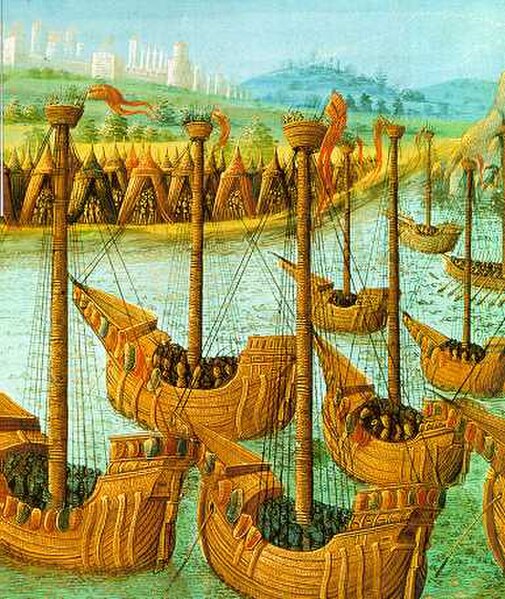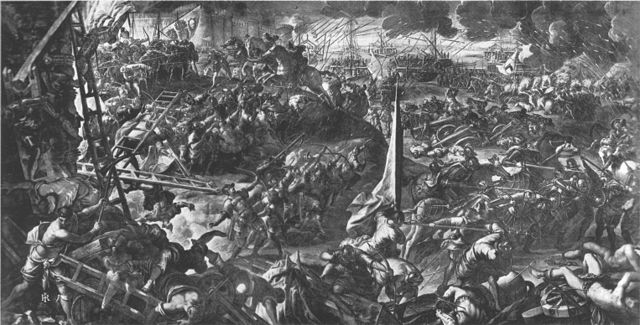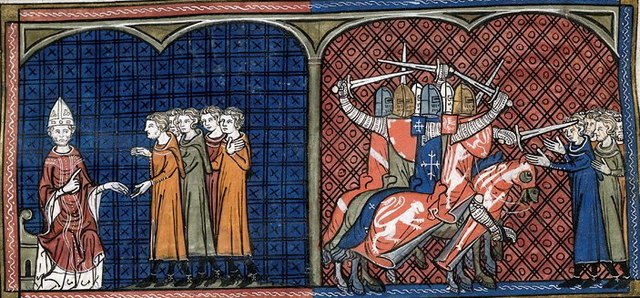The Fourth Crusade (1202–1204) was a Latin Christian armed expedition called by Pope Innocent III. The stated intent of the expedition was to recapture the Muslim-controlled city of Jerusalem, by first defeating the powerful Egyptian Ayyubid Sultanate. However, a sequence of economic and political events culminated in the Crusader army's 1202 siege of Zara and the 1204 sack of Constantinople, rather than the conquest of Egypt as originally planned. This led to the Partitio terrarum imperii Romaniae or the partition of the Byzantine Empire by the Crusaders and their Venetian allies leading to a period known as Frankokratia, or "Rule of the Franks" in Greek.
A 15th-century miniature depicting the conquest of Constantinople by the Crusaders in 1204
Venetian Navy landing in Constantinople, from a XV Century miniature
The crusaders conquering the City of Zadar, painted by Tintoretto
Dandolo Preaching the Crusade by Gustave Doré
Pope Innocent III, born Lotario dei Conti di Segni, was the head of the Catholic Church and ruler of the Papal States from 8 January 1198 until his death on 16 July 1216.
Detail of a fresco at the cloister Sacro Speco, c. 1219
Bulla of Innocent III
Innocent launched the Albigensian Crusade against the Cathars.
Tomb of Pope Innocent III at Saint John Lateran basilica








